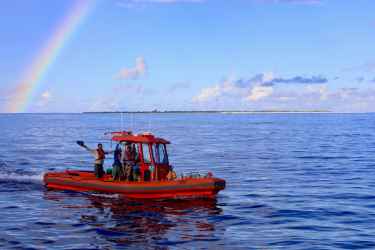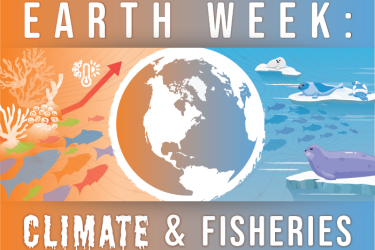Traditionally, fisheries-dependent data have been recorded using paper forms and physically transmitted from one party to another. In recent years, more than 3,000 commercial fishing vessels from around the country have transitioned to using electronic reporting through tablets and mobile phone apps. Electronic reporting (ER) is a faster, more accurate way to collect certain types of data directly from the commercial fishing fleets and transmit it back to NOAA Fisheries and state marine resource agencies.
Commercial and For-Hire
Several regions have developed actions to implement ER programs to expand data collection and improve reporting. The New England and Mid-Atlantic Fishery Management Councils developed requirements for both commercial and for-hire sectors to use ER. This was approved by NOAA Fisheries and will result in about 3,000 vessels transitioning from paper to ER.
The South Atlantic and Gulf of Mexico Fishery Management Councils have developed similar actions for all charter for-hire vessels. Both of these new actions are overseen by the Southeast For-Hire Electronic Integrated Reporting Program (SEFHEIR). These programs will be implemented in January 2021 and will result in more than 3,000 vessels using ER.
Electronic Reporting for Private Recreational Anglers
NOAA Fisheries and the Marine Fisheries Advisory Committee (MAFAC) have established a Recreational Electronic Reporting Task Force. This Task Force will provide expert advice to MAFAC, and subsequently NOAA Fisheries Leadership, on the generation, delivery, and use of electronically reported data from private recreational anglers to assist NOAA Fisheries in fulfilling its mission activities.
The NOAA Fisheries Marine Recreational Information Program (MRIP) is a state-regional-federal partnership that develops, improves, and implements a network of surveys to measure total recreational fishing catch. Learn more about how MRIP is working to advance the use of electronic reporting in recreational fishing data collection.
Dealers and Processors
Accurate and complete reporting is essential to sustainable management of the fisheries of the U.S. In addition to reports submitted from commercial and for-hire vessels, fish dealers and processors must report the fish they purchase from fishing vessels. In Alaska, the eLandings reporting system is being implemented across all commercial fisheries. The system automatically generates a report once the dealer and processors input their information. Similarly, on the east coast, the Atlantic Coastal Cooperative Statistics Program manages the Standard Atlantic Fisheries Information System (SAFIS), a program that requires dealers to report information on the fishing vessel, fishing trip, and information about the landings. Landings data from dealers and processors from all over the U.S. can be found here.
Technology for Fisheries Observers
Observers traditionally record fishery-dependent data using paper forms and logbooks. This can be time-consuming and require extensive quality control processes shoreside. Observer programs across the U.S. are now moving toward using portable tablets and other electronic devices for faster, more efficient, and more accurate data collection. Some of these devices also provide at-sea communication for observers, which helps improve their safety.
Recently, the West Coast Groundfish Observation Program developed a paper-free data collection system called OPTECS (Observer Program Technology Enhanced Collection System). This program eliminates error-prone processes like data transcription and calculation, and enables electronic data archiving. Improvements like this can result in faster data turnaround time, and allow fishery managers and fishermen to update catch quotas more rapidly and make better-informed decisions.
Integrated Fisheries Reporting
In every Region, there can be a complex set of data systems and reporting requirements that service a wide-range of management and science objectives. For example, a vessel’s captain may be required to use ER, VMS, and have an observer onboard, and report data to multiple Regions (e.g., Northeast and Southeast), the Atlantic Highlight Migratory Species program, and the State where they intend to land their catch. In addition, there is typically a dealer report and potentially biological sampling data all from the same trip. Not only is this difficult for fishermen, but it requires data managers shoreside to process data across different systems, causing impacts to the timeliness and quality of information. In order to reduce reporting burdens of fishermen and streamline data integration and analysis, NOAA Fisheries and our partners are working to modernize the reporting and data management systems within and across regions. The One-Stop project (Northeast, Mid-Atlantic, and Southeast) and the One-Touch project (West Coast) have great potential to integrate reporting requirements and data systems across States and regions.


